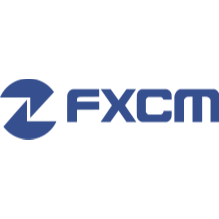芬蘭馬克
芬蘭馬克簡介
芬蘭原屬瑞典,拿破侖一世與沙皇亞歷山大一世締結蒂爾西特條約(1809年)後劃歸俄國。1809年,芬蘭成爲俄羅斯帝國的一個大公園,享有一定的獨立。兩年後,芬蘭中央銀行於1811年誕生。1812年,开始發行“戈比”紙幣,與瑞典貨幣同時通行,直到1840年,俄芬盧布才徹底取代瑞典貨幣。
芬蘭於1860年創立了第一個專門貨幣單位馬克。1860年,俄國沙皇尼古拉斯二世下令制造了馬克,先以白銀、後以黃金(自1877年起)作擔保的馬克,於l865年終於替代了盧布。經地方當局批準,芬蘭銀行於1886年獲得發行鈔票的專利,並於1889年开始發行馬克紙幣。
之所以取名馬克,一個來自日耳曼語而不是斯拉夫語的名字,則是芬蘭希望脫離沙皇統治的一種表示。
芬蘭馬克對黃金的可兌換於1915年停止執行。芬蘭於1917年宣布獨立。根據憲法第73節的規定,芬蘭銀行被置於議會任命的“監理會”的監督之下。芬蘭於1926年重新接受金本位,於1931年徹底放棄。
芬蘭馬克流通至2002年2月28日,隨後由歐元取代。
芬蘭是國際貨幣基金組織的創始國之一(1948年加入該組織)。芬蘭馬克於1957年成爲可兌換。爲頂住通貨膨脹的壓力,l963年通過貨幣改革,發行幣值等於100舊馬克的“新馬克”。在放棄布雷頓森林體系後,芬蘭馬克掛靠一套組合貨幣(1977年),隨後(1991年)又單方面與埃居(歐洲貨幣單位) 掛靠。
芬蘭於1996年接受歐洲貨幣體系的匯兌機制。
芬蘭馬克的相關內容
中文全稱: 芬蘭馬克
英文全稱:Finnish Markka (or Mark)
標準符號:FIM
紙幣面值:10,50,100,500,1000等
鑄幣面值: 1、5、10、20、50盆尼和1、5馬克
幣值換算:1馬克=100盆尼
爲芬蘭馬克樹碑
2002年3月1日,芬蘭本國貨幣停止流通,芬蘭馬克一百多年的歷史也將隨之結束。隨着這一天的臨近,芬蘭人對芬蘭馬克依依不舍的留戀之情越來越濃。2001年底,芬蘭國家博物館專門舉行大規模紀念展,向芬蘭馬克作最後告別。許多人特地來到芬蘭中央銀行購买去年發行的芬蘭馬克現鈔及硬幣作爲收藏。芬蘭海運局還專門從芬蘭中央銀行买下了一批尚未使用過的面值5芬蘭馬克的硬幣。這批1978年鑄造的硬幣有芬蘭烏爾霍破冰船的圖案。芬蘭海運局認爲,它不僅代表着芬蘭先進的造船業,更代表着芬蘭的航海業,值得收藏,同時可作爲饋贈的禮品。
芬蘭古城波爾沃的市政府代表伊爾卡·阿拉瓦在2001年12月21日向市政府提出一項建議:在該市爲芬蘭馬克豎立一座紀念碑,其理由是,芬蘭馬克值得紀念!波爾沃作爲芬蘭的古城是建立芬蘭馬克紀念碑的理想地點。紀念碑的碑文爲:“芬蘭馬克的歷史(1860—2002)”。
The History of the Finnish Markka (1860 – 2002 )
Prehistory
The oldest coins found in Finland are about 2000 years old. In museums there are some Roman copper coins from that period. Silver coins became common in the ninth century. Coins were brought to Finland when trading furs. The Finnish word ‘raha’ (money) has its origin in the word ‘fur’.
The period of Swedish money
In the 13th and 14th centuries there was a mint working in Turku where Swedish kings stroke coins.
During the reign of King Gustav Vasa the ?re, the mark and the thjaler were issued in the kingdom of Sweden-Finland.
The period of Russian reign
When Russia had conquered Finland the rouble was declared the official currency in the grand duchy in 1809. The Bank of Finland was established in 1811 and some thirty years later Swedish money was withdrawn from circulation and the Russian silver rouble became the only legal tender.
Senator J.V. Snellman and other pro-Finnish statesmen fed the rulers in St. Petersburg with the ideas that the rouble was too big a unit for a small country like Finland. After years of shilly-shallying Finland obtained its own monetary unit, the markka, (the mark) in 1860. Its value was a quarter of the rouble. The mark got its name according to a monetary unit which was well-known in northern Europe. In the kingdom of Sweden-Finland the mark was used until 1776.
In the beginning of the 1860’s Finland was the only country where the mark was used. Germany took the name of the mark for its money ten years later.
In 1865 silver money became the sole legal tender and the mark was linked to silver replacing the rouble as a means of payment. Thirteen years later the mark was begged to gold.
In 1886 The Bank of Finland was granted the sole right to issue banknotes in Finland. Design of the first banknotes to be manufactured at the bank’s own printing works commenced in the same year and the notes were in circulation three years later.
In 1915 the Bank of Finland suspended the redemption of banknotes in gold.
After Finland’s independence ( 6 December 1917 )
In 1926 Finland returned to the gold standard and five years later it was effectively abandoned.
In 1948 Finland joins in the International Monetary Fund (IMF) and the World Bank (IBRD); the international par value of the mark was defined (officially in 1951 ) in terms of gold and the US dollar In the late 1950’s the mark became an externally convertible currency again.
In 1963 the currency reform was carried out: 1 new mark = 100 old marks.
In the beginning of 1970 the fixed value of the mark in terms of gold is abandoned as the basis for exchange rates and the Bank of Finland started to steer the external value of the mark making use of a currency-basket index. At the end of the year 1986 new 10 and 500 mark banknotes were put into circulation and in 1991 the external value of the mark was defined in relation to the ECU, the currency unit of the European Community.
In 1992 the mark was put to float and a year later new one, five, and ten mark coins were issued as well as 20 mark banknotes. In 1995 Finland became a member of the European Union and also joined the Economic and Monetary Union, EMU and a year later joined the Exchange Rate Mechanism (ERM). In 1999 the EURO was launched as an account currency and three years later new EURO coins and banknotes were issued and the markka became history.
芬蘭馬克樣幣 芬蘭馬克鑄幣
芬蘭原屬瑞典,拿破侖一世與沙皇亞歷山大一世締結蒂爾西特條約(1809年)後劃歸俄國。1809年,芬蘭成爲俄羅斯帝國的一個大公園,享有一定的獨立。兩年後,芬蘭中央銀行於1811年誕生。1812年,开始發行“戈比”紙幣,與瑞典貨幣同時通行,直到1840年,俄芬盧布才徹底取代瑞典貨幣。
芬蘭於1860年創立了第一個專門貨幣單位馬克。1860年,俄國沙皇尼古拉斯二世下令制造了馬克,先以白銀、後以黃金(自1877年起)作擔保的馬克,於l865年終於替代了盧布。經地方當局批準,芬蘭銀行於1886年獲得發行鈔票的專利,並於1889年开始發行馬克紙幣。
之所以取名馬克,一個來自日耳曼語而不是斯拉夫語的名字,則是芬蘭希望脫離沙皇統治的一種表示。
芬蘭馬克對黃金的可兌換於1915年停止執行。芬蘭於1917年宣布獨立。根據憲法第73節的規定,芬蘭銀行被置於議會任命的“監理會”的監督之下。芬蘭於1926年重新接受金本位,於1931年徹底放棄。
芬蘭馬克流通至2002年2月28日,隨後由歐元取代。
芬蘭是國際貨幣基金組織的創始國之一(1948年加入該組織)。芬蘭馬克於1957年成爲可兌換。爲頂住通貨膨脹的壓力,l963年通過貨幣改革,發行幣值等於100舊馬克的“新馬克”。在放棄布雷頓森林體系後,芬蘭馬克掛靠一套組合貨幣(1977年),隨後(1991年)又單方面與埃居(歐洲貨幣單位) 掛靠。
芬蘭於1996年接受歐洲貨幣體系的匯兌機制。
芬蘭馬克的相關內容
中文全稱: 芬蘭馬克
英文全稱:Finnish Markka (or Mark)
標準符號:FIM
紙幣面值:10,50,100,500,1000等
鑄幣面值: 1、5、10、20、50盆尼和1、5馬克
幣值換算:1馬克=100盆尼
爲芬蘭馬克樹碑
2002年3月1日,芬蘭本國貨幣停止流通,芬蘭馬克一百多年的歷史也將隨之結束。隨着這一天的臨近,芬蘭人對芬蘭馬克依依不舍的留戀之情越來越濃。2001年底,芬蘭國家博物館專門舉行大規模紀念展,向芬蘭馬克作最後告別。許多人特地來到芬蘭中央銀行購买去年發行的芬蘭馬克現鈔及硬幣作爲收藏。芬蘭海運局還專門從芬蘭中央銀行买下了一批尚未使用過的面值5芬蘭馬克的硬幣。這批1978年鑄造的硬幣有芬蘭烏爾霍破冰船的圖案。芬蘭海運局認爲,它不僅代表着芬蘭先進的造船業,更代表着芬蘭的航海業,值得收藏,同時可作爲饋贈的禮品。
芬蘭古城波爾沃的市政府代表伊爾卡·阿拉瓦在2001年12月21日向市政府提出一項建議:在該市爲芬蘭馬克豎立一座紀念碑,其理由是,芬蘭馬克值得紀念!波爾沃作爲芬蘭的古城是建立芬蘭馬克紀念碑的理想地點。紀念碑的碑文爲:“芬蘭馬克的歷史(1860—2002)”。
The History of the Finnish Markka (1860 – 2002 )
Prehistory
The oldest coins found in Finland are about 2000 years old. In museums there are some Roman copper coins from that period. Silver coins became common in the ninth century. Coins were brought to Finland when trading furs. The Finnish word ‘raha’ (money) has its origin in the word ‘fur’.
The period of Swedish money
In the 13th and 14th centuries there was a mint working in Turku where Swedish kings stroke coins.
During the reign of King Gustav Vasa the ?re, the mark and the thjaler were issued in the kingdom of Sweden-Finland.
The period of Russian reign
When Russia had conquered Finland the rouble was declared the official currency in the grand duchy in 1809. The Bank of Finland was established in 1811 and some thirty years later Swedish money was withdrawn from circulation and the Russian silver rouble became the only legal tender.
Senator J.V. Snellman and other pro-Finnish statesmen fed the rulers in St. Petersburg with the ideas that the rouble was too big a unit for a small country like Finland. After years of shilly-shallying Finland obtained its own monetary unit, the markka, (the mark) in 1860. Its value was a quarter of the rouble. The mark got its name according to a monetary unit which was well-known in northern Europe. In the kingdom of Sweden-Finland the mark was used until 1776.
In the beginning of the 1860’s Finland was the only country where the mark was used. Germany took the name of the mark for its money ten years later.
In 1865 silver money became the sole legal tender and the mark was linked to silver replacing the rouble as a means of payment. Thirteen years later the mark was begged to gold.
In 1886 The Bank of Finland was granted the sole right to issue banknotes in Finland. Design of the first banknotes to be manufactured at the bank’s own printing works commenced in the same year and the notes were in circulation three years later.
In 1915 the Bank of Finland suspended the redemption of banknotes in gold.
After Finland’s independence ( 6 December 1917 )
In 1926 Finland returned to the gold standard and five years later it was effectively abandoned.
In 1948 Finland joins in the International Monetary Fund (IMF) and the World Bank (IBRD); the international par value of the mark was defined (officially in 1951 ) in terms of gold and the US dollar In the late 1950’s the mark became an externally convertible currency again.
In 1963 the currency reform was carried out: 1 new mark = 100 old marks.
In the beginning of 1970 the fixed value of the mark in terms of gold is abandoned as the basis for exchange rates and the Bank of Finland started to steer the external value of the mark making use of a currency-basket index. At the end of the year 1986 new 10 and 500 mark banknotes were put into circulation and in 1991 the external value of the mark was defined in relation to the ECU, the currency unit of the European Community.
In 1992 the mark was put to float and a year later new one, five, and ten mark coins were issued as well as 20 mark banknotes. In 1995 Finland became a member of the European Union and also joined the Economic and Monetary Union, EMU and a year later joined the Exchange Rate Mechanism (ERM). In 1999 the EURO was launched as an account currency and three years later new EURO coins and banknotes were issued and the markka became history.
芬蘭馬克樣幣 芬蘭馬克鑄幣
-
芬蘭馬克鑄幣
熱門專欄更多
文章數量:9310
最新文章
新西蘭元/美元 當日內: 看漲。
文章數量:8351
文章數量:4607
文章數量:2692
最新文章
以色列對伊朗進行報復性打擊後油價飆升
文章數量:1436
文章數量:1157
最新文章
小鵬力求上進,卻難展翅?
熱門資訊更多
以色列對伊朗進行報復性打擊後油價飆升
04/19 18:04
福匯FXCM
由於以色列報復性襲擊的報道,歐元/美元在早些時候遭遇拋售後反彈
04/19 17:58
福匯FXCM
中東緊張局勢爆發,墨西哥比索遭重挫
04/19 17:26
福匯FXCM
今日銀價:根據FXStreet數據,銀價上漲
04/19 17:17
福匯FXCM
印度今日金價:MCX數據顯示黃金上漲
04/19 17:13
福匯FXCM
新西蘭元/美元 當日內: 看漲。
04/19 17:08
KVB昆侖國際






